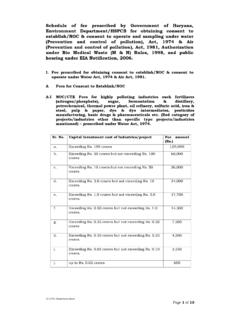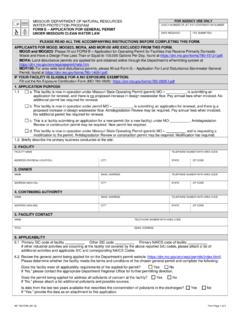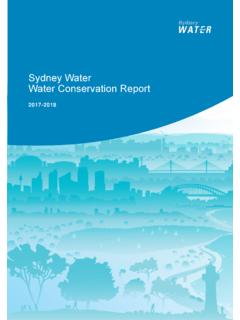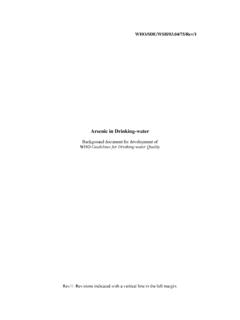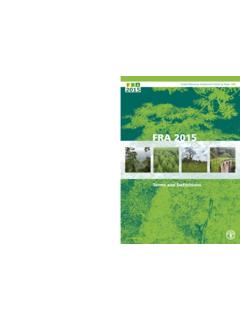Transcription of Study of Oil and Gas Extraction Wastewater Management ...
1 Study of Oil and Gas Extraction Wastewater Management under the Clean water Act EPA 821 R19 001 Environmental Protection Agency Engineering and Analysis Division Office of water 1200 Pennsylvania Avenue, NW Washington, 20460 Draft May 2019 For assistance in accessing this document pleasesend an email to Disclaimer DISCLAIMER This document is not a regulation, nor is it guidance on how to comply with regulations. Thus, this document does not impose legally binding requirements on the Environmental Protection Agency, states, tribes, or the regulated community, and the general description provided here may not apply to a particular situation based upon the circumstances.
2 This document does not confer legal rights or impose legal obligations upon any member of the public. Contents Study of Oil and Gas Extraction Wastewater Management i CONTENTS Page 1. EXECUTIVE SUMMARY .. 1 2. Study SCOPE AND GOALS .. 4 3. BACKGROUND .. 5 Produced water Characteristics .. 5 Management of Produced Waters .. 7 The EPA s Clean water Act Regulations for Produced water .. 9 Technology-Based Effluent Limitations .. 9 water Quality-Based Effluent Limitations .. 14 4. THE EPA S OUTREACH TO STAKEHOLDERS .. 16 Major Themes from State Agencies .. 18 Major Themes from Tribes .. 22 Major Themes from Oil and Gas Industry Members.
3 23 Major Themes from Members of NGOs .. 26 Major Themes from Members of Academia .. 27 Major Themes from Other Entities .. 28 5. SUMMARY AND NEXT STEPS .. 30 6. REFERENCES .. 31 List of Tables Study of Oil and Gas Extraction Wastewater Management ii LIST OF TABLES Page Table 3-1. Type and Purpose of Additives used in Well Development, Stimulation and Maintenance ..6 Table 3-2. Applicability of Effluent Guidelines Levels of Control to Types of Discharger ..10 Table 3-3. Pollutant Classes Regulated by Effluent Guidelines Levels of Table 3-4. Levels of Control by Subcategory in the Oil and Gas Extraction Effluent Guidelines ..11 Table 3-5. Subparts of 40 CFR Part 435 and their Applicability and Limitations.
4 12 Table 4-1. List of Engagement Activities in 2018 ..17 List of Figures Study of Oil and Gas Extraction Wastewater Management iii LIST OF FIGURES Page Figure 3-1. Concentration of Select Constituents in Oil and Gas Produced water (USGS National Produced Waters Geochemical Database, ) ..7 Figure 3-2. Produced water Management Options ..8 Figure 3-3. Graphic of 98th Meridian* ..13 Section 1 Executive Summary Study of Oil and Gas Extraction Wastewater Management 1 1. EXECUTIVE SUMMARY Large volumes of Wastewater are generated in the oil and gas industry, and projections show that these volumes will only increase. Currently, the majority of produced water is managed by disposing of it using a practice known as underground injection, where that water can no longer be accessed or used.
5 The limits of injection are evident in some areas, and new approaches are becoming necessary. Some states and stakeholders are asking whether it makes sense to continue to waste this water , particularly in water scarce areas of the country, and what steps would be necessary to treat and renew it for other purposes. As a result, the Environmental Protection Agency (EPA) conducted a Study evaluating Management of produced waters1 from onshore oil and gas Extraction activities. The EPA wanted to better understand produced water generation, Management , and disposal options at the regional, state and local levels for both conventional and unconventional2 onshore oil and gas Extraction .
6 While the EPA looked at a variety of alternatives for reuse of produced water , ultimately, the EPA s Study goal was to evaluate approaches to manage oil and gas Extraction wastewaters generated at onshore facilities, including but not limited to an assessment of technologies for facilities that treat and discharge oil and gas Extraction wastewaters to surface waters that are regulated under the Clean water Act (CWA) (for purposes of this report, surface waters 3). A second goal was to better understand any potential need for, and any concerns over, additional discharge options under the CWA for onshore oil and gas Wastewater . The EPA currently regulates discharges of oil and gas Wastewater under the oil and gas Extraction effluent limitations guidelines and pretreatment standards (ELGs) found at 40 CFR part 435.
7 For onshore oil and gas producers, except West of the 98th meridian4, discharges of pollutants from produced water to surface waters are prohibited. In addition, discharges from centralized waste treatment (CWT) facilities that accept produced water are regulated under ELGs found at 40 CFR part 437. 40 CFR part 437 provides for discharge to surface waters and contains numerical discharge limits for such discharges. The characteristics, quantity and quality of the wastes generated during oil and gas exploration and production (E&P) activities depend upon factors such as the characteristics of the formation, the type of drilling employed, the depth of the well and the 1 For purposes of this Study , EPA is using the definition of produced water found at 40 CFR Part 435 which is: the water (brine) brought up from the hydrocarbon-bearing strata during the Extraction of oil and gas, and can include formation water , injection water , and any chemicals added downhole or during the oil/ water separation process.
8 2 EPA defines unconventional oil and gas at 40 CFR (a)(2)(i) as crude oil and natural gas produced by a well drilled into a shale and/or tight formation (including, but not limited to, shale gas, shale oil, tight gas, tight oil). 3 Only waters that meet the definition of waters of the United States are regulated under the CWA 33 1362(7). Therefore, the term surface waters as used in this report refers to waters of the United States. 4 See 40 CFR 435 Subpart E (44 FR 22075). Section 1 Executive Summary Study of Oil and Gas Extraction Wastewater Management 2 type and quantity of chemical additives used during drilling, production and well maintenance and stimulation activities.
9 Solid wastes such as drill cuttings are typically managed through landfilling or on-site disposal in pits. Produced water has historically been managed as a waste via Class I and II underground injection control (UIC) disposal wells under the Safe Drinking water Act (SDWA) or disposal in on-site evaporation or seepage pits. While this continues to be the predominant Management approach for the vast majority of produced water in the United States, produced water is increasingly being recycled and reused within the oil and gas field for drilling and hydraulic fracturing activities. While opportunities exist to recycle/reuse produced water outside of the oilfield, this Management approach is rare.
10 Some produced water is currently used for irrigation of crops. Road spreading of produced water for dust and ice control is also occurring in some states. Off-site CWT facilities are also used to manage these wastewaters. In addition, some produced water is managed at publicly-owned treatment works (POTWs5). Currently, discharge of oil and gas Extraction wastewaters to surface waters is occurring in limited geographic areas of the country. Discharges for agriculture and wildlife propagation are occurring primarily in Wyoming; these produced waters generally receive limited treatment in most cases, consisting primarily of settling and/or skimming. Indirect discharge via POTWs is primarily occurring in Pennsylvania; these produced waters receive limited or no treatment prior to transfer to the POTW.










